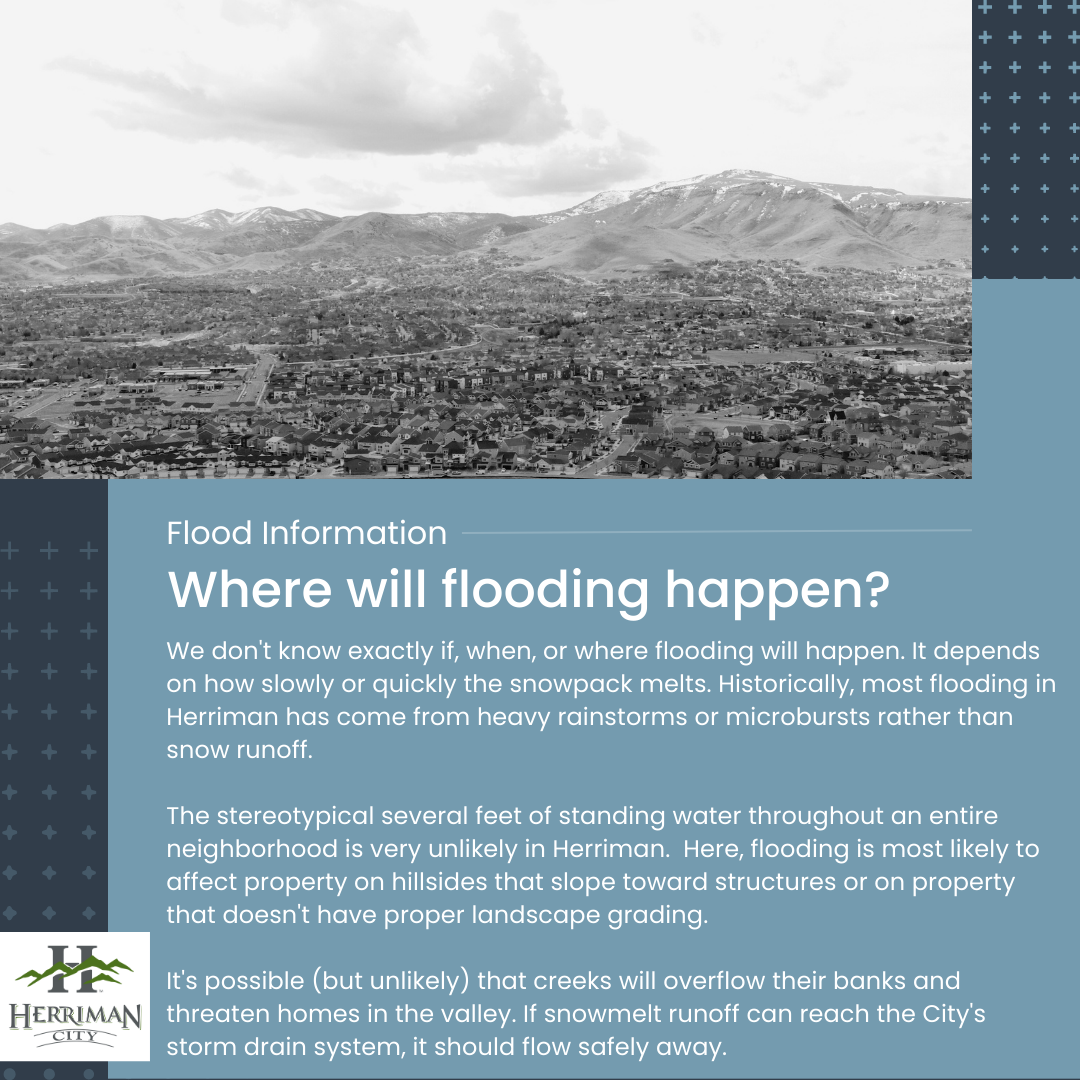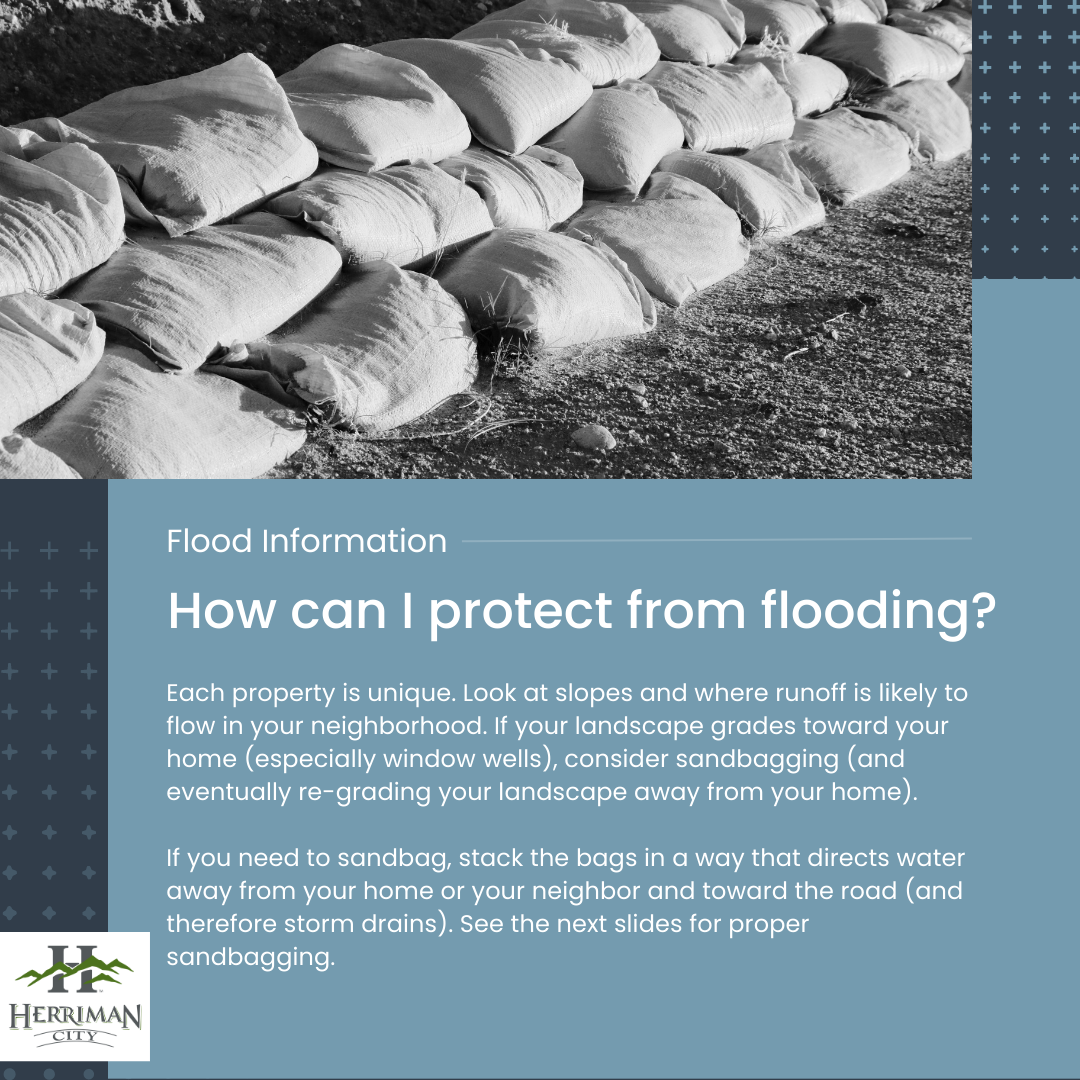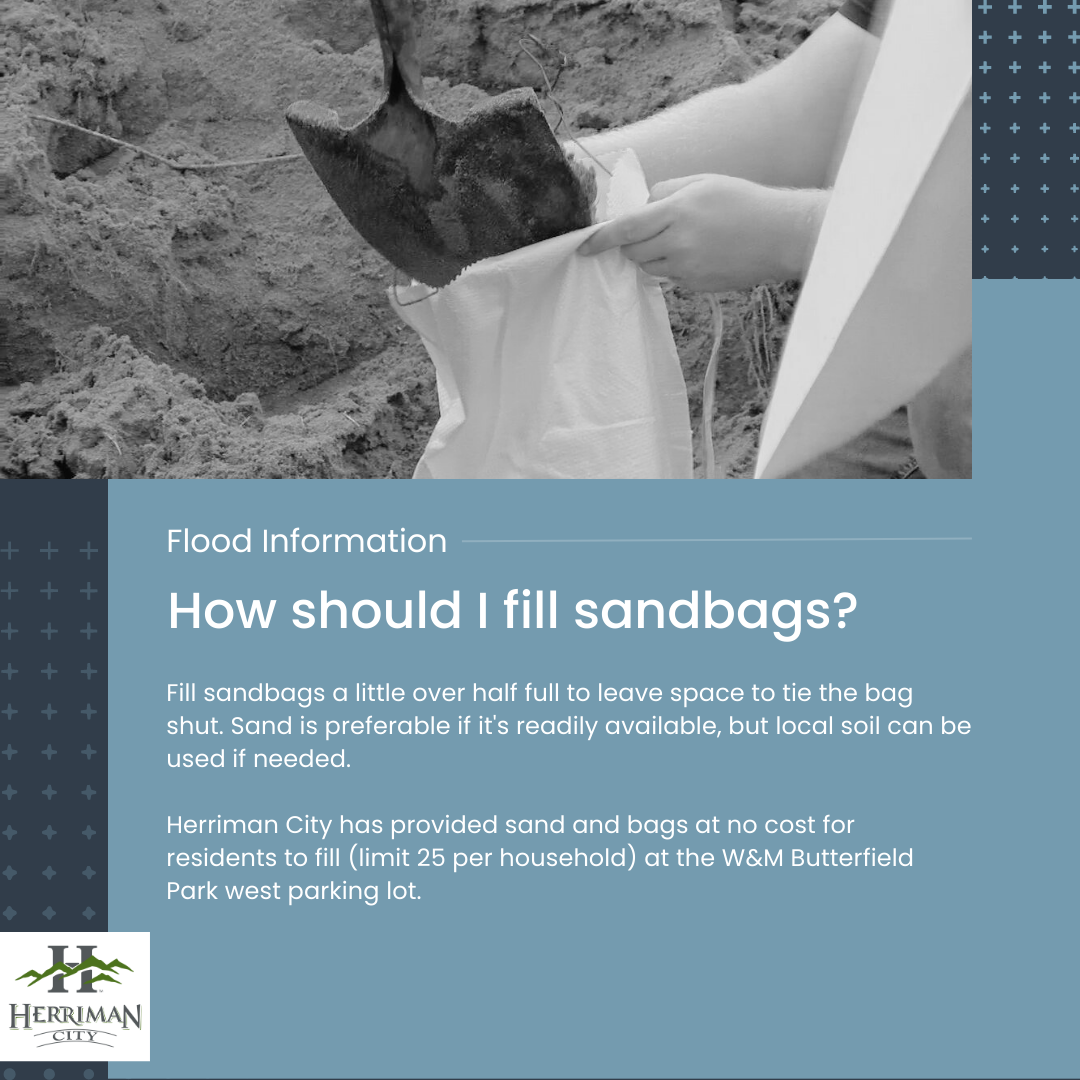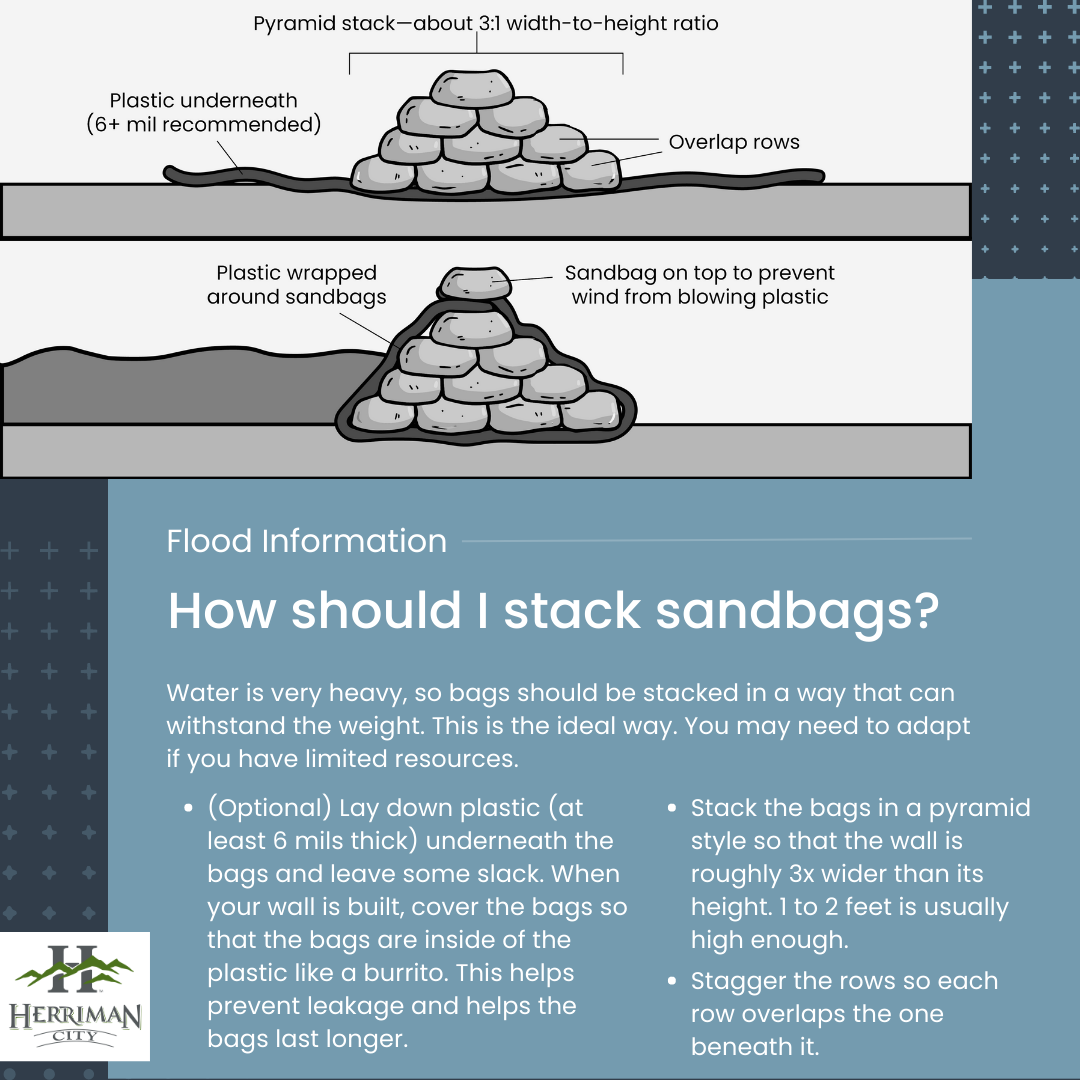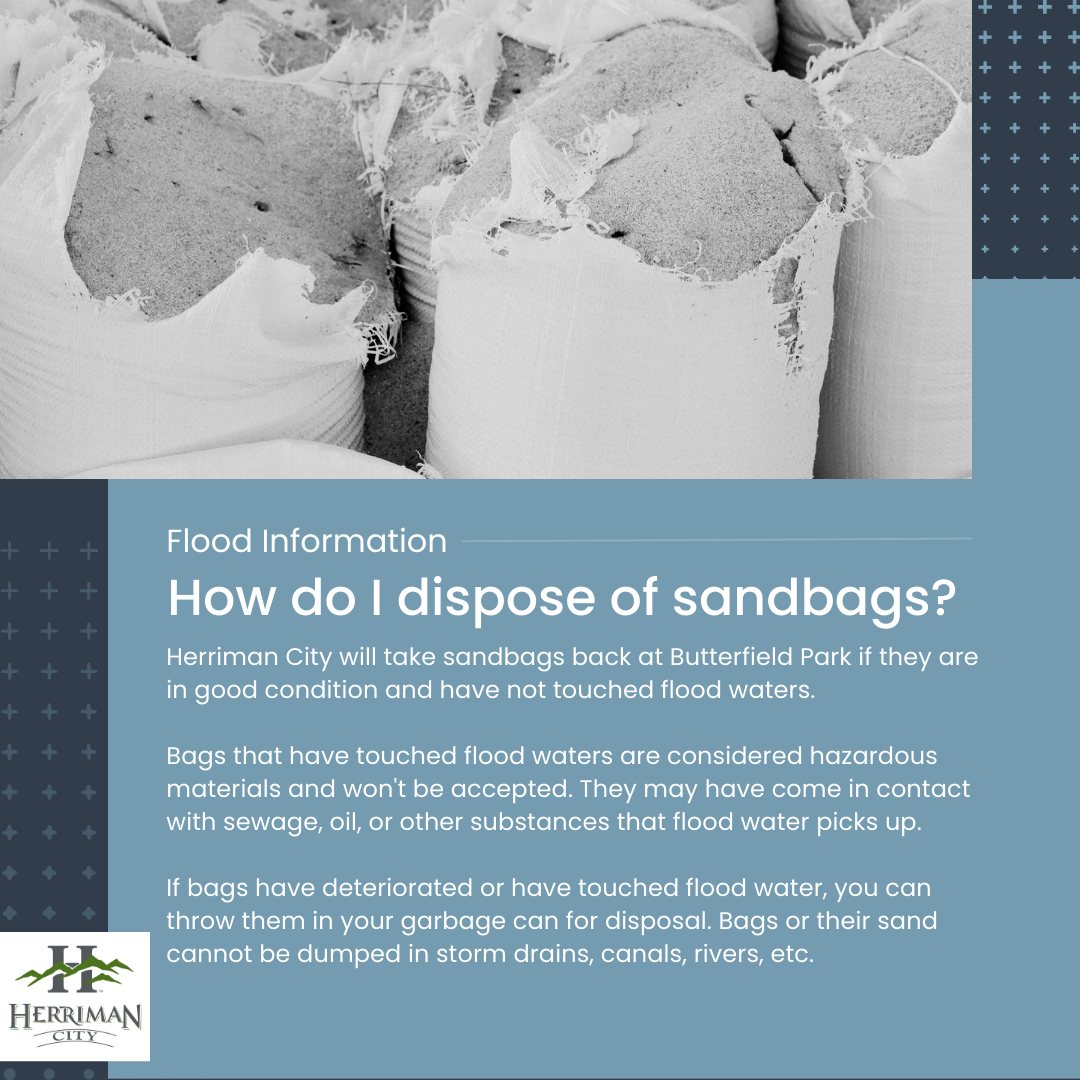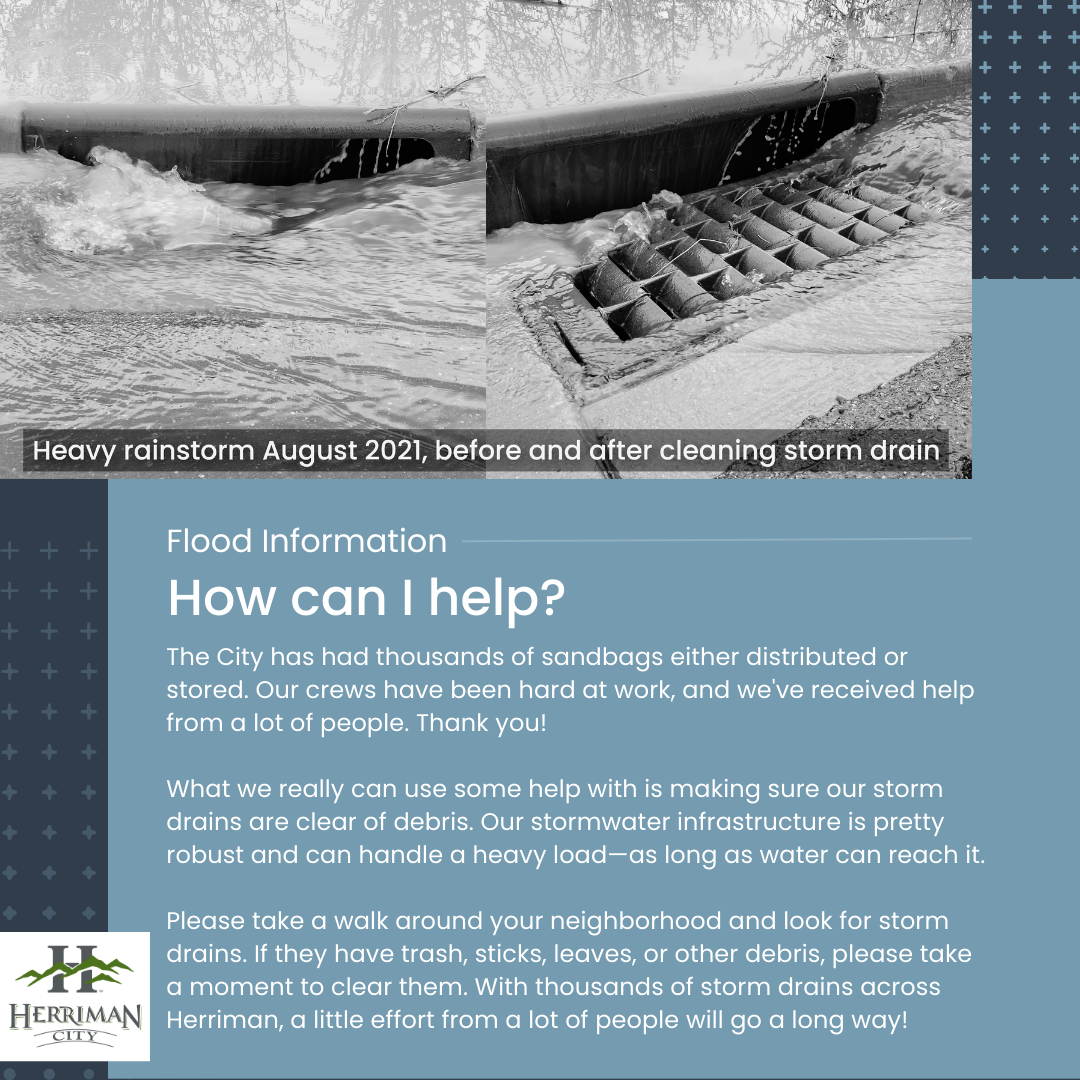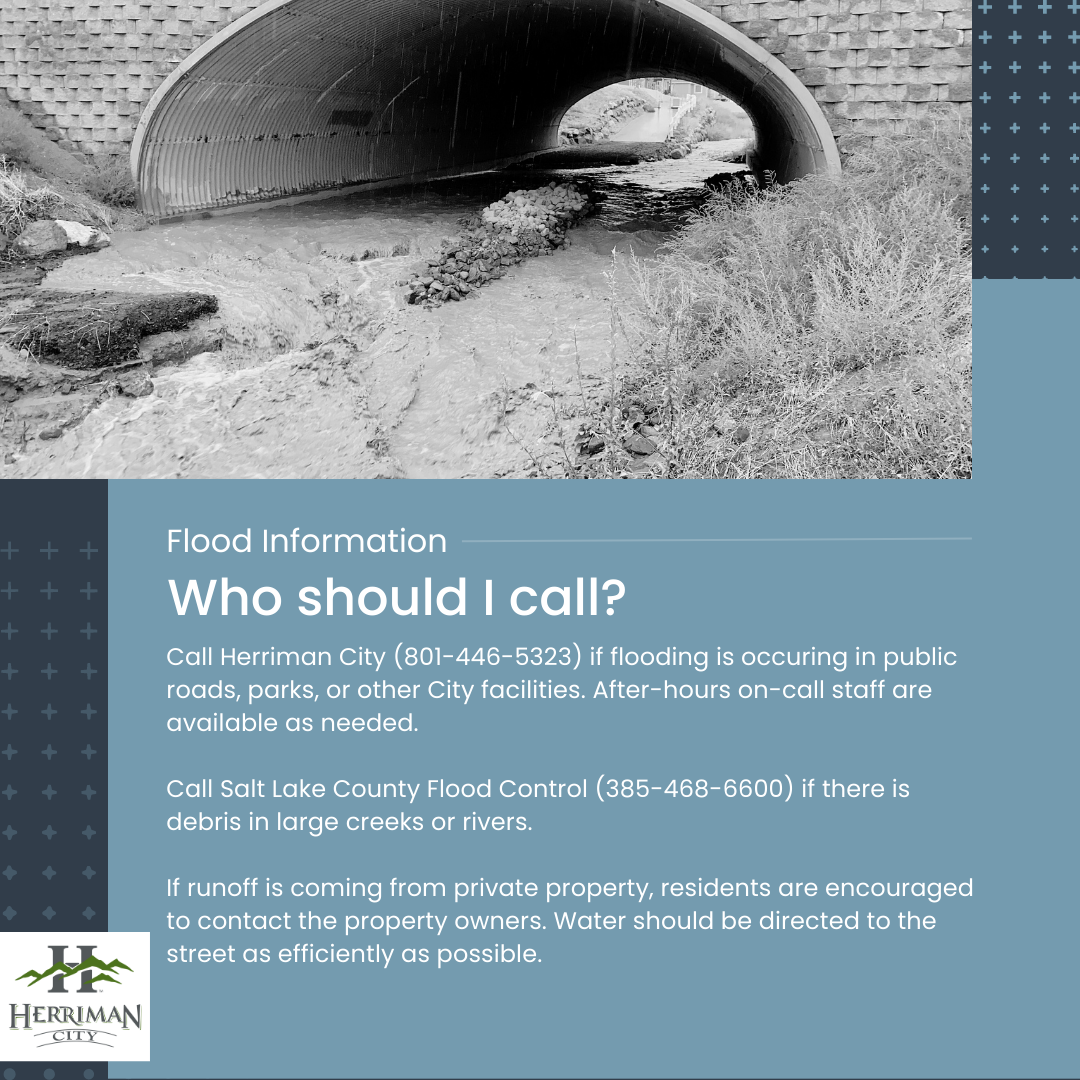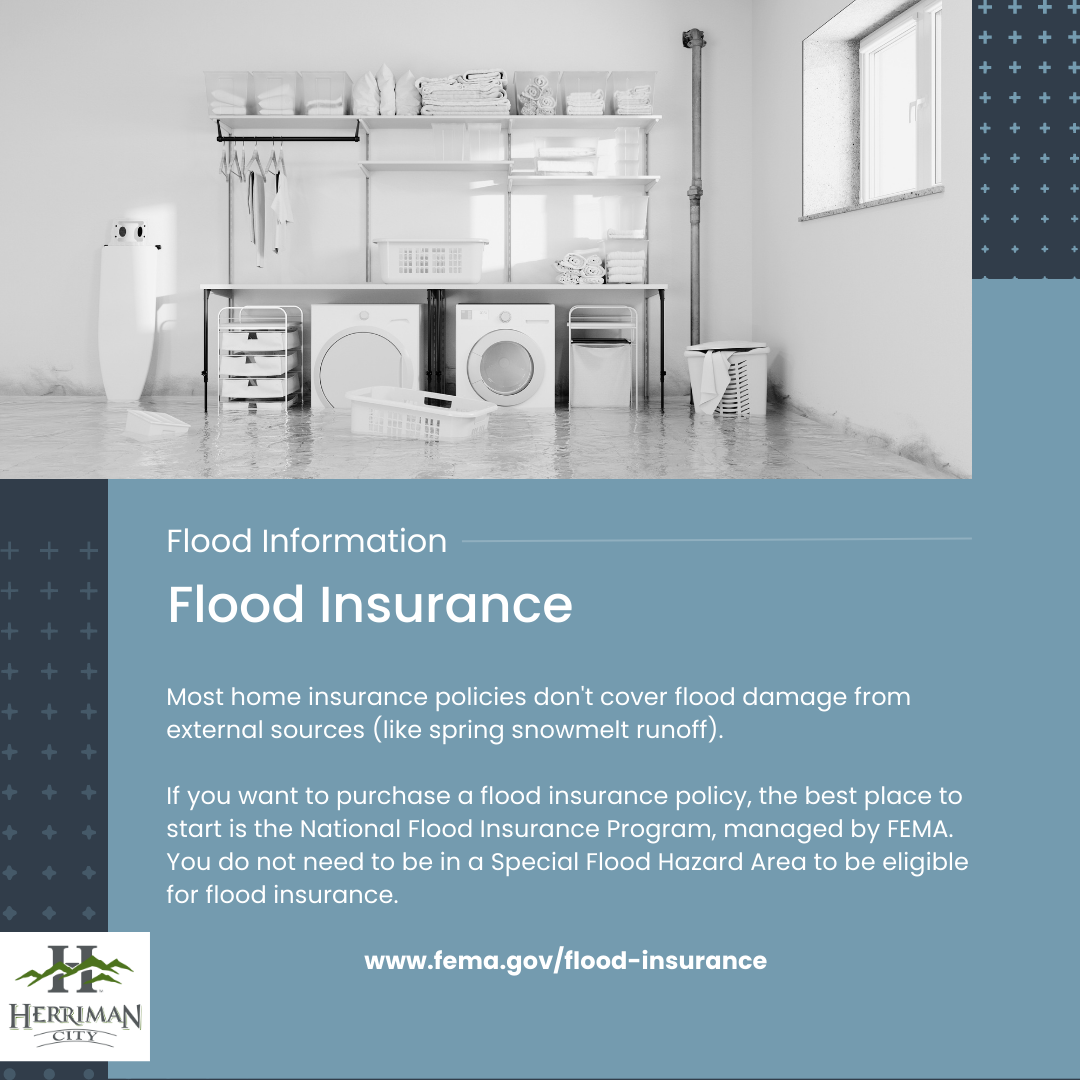5355 West
Herriman Main Street
Herriman, UT 84096
- Calendar
- Committees
- Parks and Recreation
-
Community Info
- Be Ready Herriman
- City Maps (GIS)
- Community Gardens
- Construction Projects
- Upcoming Projects
- Emergency Management
- Newsletters
- Fiber Internet
- Fireworks
- Herriman Yeti
- New Residents
- Olympia
- Report An Issue
- Room Rentals
- Schools
- Southwest Athletic Complex Proposal
- Thomas Butterfield Scholarship
- Utility Billing
- Volunteer
- We Are Herriman
- Wreaths Across America
- Holiday Homes

Flooding Information
Flooding is a risk in any city, county, and state, though some areas are more at risk than others. Risks rise in the spring after a wet winter (such as Utah's 2022-2023 winter), when warmer temperatures melt the snowpack and induce runoff.
Below are some frequently asked questions regarding flooding and sandbags. If you have any questions that aren't listed below, email info@herriman.gov or call Herriman City at 801-446-5323.
Click the dots to see informational graphics.
Flooding FAQs
Flooding
Where is flooding likely to occur?
We don't know exactly if, when, or where flooding will happen. Flooding can occur from storms; over-saturated ground; rising ground water; overflowing or surging of natural water bodies such as rivers, creeks, streams, ponds, or lakes; or even runoff from your own back yard. After a wet winter, it depends on how slowly or quickly the snowpack melts. Historically, most flooding in Herriman has come from heavy rainstorms or microbursts rather than snow runoff.
When you imagine a flood, you may think of several feet of standing water throughout an entire neighborhood. That is very unlikely in Herriman. Here, flooding is most likely to affect property on hillsides that slope toward structures or on property that doesn't have proper landscape grading. It's possible (but unlikely) that creeks will overflow their banks and threaten homes in the valley. If snowmelt runoff can reach the City's storm drain system, it should flow safely away.
Does homeowners' insurance cover flooding?
Flood damage from external sources of water (water entering from outside the home) is not typically covered by standard homeowner insurance policies. You can purchase a separate flood insurance policy through the National Flood Insurance Program.
Who should I call if I see flooding in Herriman?
- If flooding is happening on a public road, park, or other City facility, contact Herriman City by calling 801-446-5323.
- If it's happening in a river, creek, stream, or canal, contact Salt Lake County Flood Control at 385-468-6600.
- If runoff is coming from a private property, please contact the property owner. Water should be directed to the street (and into a storm drain) as efficiently as possible.
How can I help?
One of the best ways to help prevent flooding in Herriman is by taking a walk around your neighborhood and clearing storm drains of trash, sticks, leaves, and other debris. You can also fill out the volunteer form at the top of the page to send your contact information to the City, who will reach out to you as needs arise.
Who should I call if I see blockage/debris buildup?
If the debris is:
- Blocking a storm drain grate, please take a moment and clear it. If you're unable to do so, contact Herriman City by calling 801-446-5323.
- Within local roadways or intersections, contact Herriman City.
- In a river, creek, stream, or canal, contact Salt Lake County Flood Control at 385-468-6600.
Why are you asking residents to keep drains clear of debris? Isn't that the City's job?
If you see small debris blocking or clogging roadside storm drains, you can be a big help by using a rake and removing and disposing of the debris. This is a quick and easy way to reduce the chances of small nuisance flooding. City and county resources are spread thin and do not have the staff to respond immediately for every storm drain inlet that is blocked and needs to be cleared.
What is the City doing to prepare?
Year-round, City crews maintain the stormwater system by cleaning gutters and storm grates by street sweeper trucks, clearing drainage paths and culverts of debris, and keeping up with any needed maintenance. Herriman City also coordinates with Salt Lake County and surrounding cities to make sure resources are available when they're needed.
In 2023, the City has filled and distributed over 3,000 sandbags, with over 1,200 fill bags stored and ready for use. Another 7,500 bags are unfilled and ready if needed.
Sandbags
Where can I pick up sandbags?
Sand and bags are available for residents to fill at no cost at the Butterfield Park west dirt parking lot (6212 Butterfield Park Way). Residents are asked to take bags only if you have a direct need to help ensure a supply for any emergency situations. Limit of 25 bags per household.
If I'm filling my own sandbags, how much should one be filled?
Fill sandbags a little over ½ full to leave space to tie the bag shut. Sand is preferable if readily available; however, local soil can be used.
How do I stack my sandbags?
Water is very heavy, so bags should be stacked in a way that can withstand the weight. This is the ideal way. You may need to adapt if you have limited resources.
- (Optional) Lay down plastic (at least 6 mils thick) underneath the bags and leave some slack. When your wall is built, cover the bags so that the bags are inside of the plastic like a burrito. This helps prevent leakage and helps the bags last longer.
- Stack the bags in a pyramid style so that the wall is roughly 3x wider than its height. 1 to 2 feet is usually high enough.
- Stagger the rows so each row overlaps the one beneath it.
More tips are available at the Salt Lake County Flood Preparedness web page: https://slco.org/runoff-ready/.
How long do sandbags typically last?
Burlap and polypropylene sandbags can last up to 8 months to a year. Direct sunlight can deteriorate sandbags quickly (shortens lifespan by months).
How much do sandbags typically cost?
Empty bags usually cost 15 to 30 cents per bag. Sand and bags for Herriman residents are available at no cost at Butterfield Park (limit 25 per household)
Where should I dispose of my sandbags?
Herriman City will take sandbags back at Butterfield Park if they are in good condition and have not touched flood waters. Bags that have touched flood waters are considered hazardous materials and won't be accepted. They may have come in contact with sewage, oil, or other substances that flood water picks up. If bags have deteriorated or have touched flood water, you can throw them in your garbage can for disposal. Bags or their sand cannot be dumped in storm drains, canals, rivers, etc.
Can Herriman City come to my house to help stack sandbags or assess my needs?
No, unfortunately. City staffing resources are spread thin, and we do not have the staffing available to send out to assess or assist on a case-by-case basis. Residents are encouraged to work with their neighbors/neighborhood, family members, church groups, and youth groups like Boy/Girl Scouts if they can assist.

